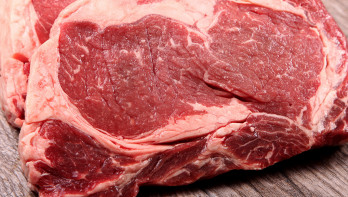Analysis Cattle & Beef
How long will the beef market remain stable?
The beef market is going through a difficult phase. While the sales of almost all parts are under pressure, the slaughter prices remain unchanged. Slaughterhouses are hesitant to lower their purchase prices for fear of empty slaughter hooks and therefore only make limited adjustments to their selling prices. However, a reduction in the price of pork could provide an impetus to initiate a decline in the beef market.
The beef prices rose two weeks ago. The P-quality increased by 5 cents from €3.18 to €3.23. Meanwhile, the U-quality rose by 6 cents from €4.97 to €5.03.
Remarkably, the higher slaughter prices do not coincide with a strong beef market. Sales of beef parts are under pressure almost across the board. Due to high prices, demand is weak. Selling luxury parts has been difficult since the beginning of spring. In addition, sales of trimmings have also declined over the past roughly one and a half months. Nevertheless, parts prices, especially trimmings prices, are higher than last year.
Despite weak sales, slaughterhouses do not believe that significantly lowering meat prices is desirable and refuse to reduce prices. Lowering the selling price would also require a decrease in the slaughter price, which is not desirable due to tight supply, as insiders in the market explain.
Promotions
As an alternative to lowering selling prices, slaughterhouses are focusing on promotions. For almost two months now, the refrigerated shelves designated for promotions have been filled with meat. This way, slaughterhouses can stimulate the sales of readily available parts without lowering prices across the board.
The beef sector is observing the situation for now, as there is a prevailing feeling in the market that some impetus may come during the holidays. Normally, holidays work against the meat sector as North European consumers head south, reducing demand. However, this year, the holiday gives the beef sector hope that the sales of luxury parts may pick up for the first time in a long while. Restaurant visits generally increase during the holidays. Given the challenging sales, this factor may weigh more heavily than the lower number of consumers in Northern Europe, at least as reasoned within the beef sector.
Rain and Cold
The main reason for the weak position of the beef market remains the wet and cold weather. This year, there has been significantly less barbecuing in spring than in previous years, and the weather in the first weeks of summer has also not been favorable to the meat markets. As a result, demand for beef remains weak. A similar dynamic is also visible in the pork market. However, there is a difference. Pork prices have been under pressure for weeks. In Germany, the trading price has taken a significant step down, as indicated by the VEZG index. Since the Dutch market exports substantial volumes to Germany, it is likely that the DCA market price will also decrease. Currently, the market price is 6 cents higher than the German price.
Dutch slaughterhouses have noticed the difference, leading to clear pressure on slaughter prices. Vion took the initiative and cautiously lowered prices by 2 cents, from €2.06 to €2.04. This was seen by the market as a signal that it is time to reduce purchase prices. Van Rooi, Compaxo, Westford, and Pali Group all lowered their prices by 5 cents, from €1.97 per kilo to €1.92. Given the consensus among the rest of the slaughterhouses, the market expects Vion to further reduce prices.
A similar scenario cannot be ruled out for beef. There are more similarities than differences between the markets. Sales are weak in both markets, and cattle supply is also tight. The main difference between the two markets is that parts prices in the beef market are not under pressure yet, while pork parts have been declining in price for weeks.
In week 26, pork prices across the board took a significant step back. In week 27, prices of necks, shoulders, and lean cuts continued to decline. Parts prices have been under pressure for the last five weeks in general. Only in week 25 did prices increase slightly. The total carcass price rose by 13 cents that week. This increase was fully offset the following week with a decrease of as much as 1.66 cents per kilo. In week 27, the decrease per kilo was again more than a cent. In total, the carcass price decreased by 2.85 cents per kilo during that period.
If companies in the beef sector decide to lower their selling prices, a similar scenario is likely. Especially now that lower pork prices are providing stronger competition for beef.




